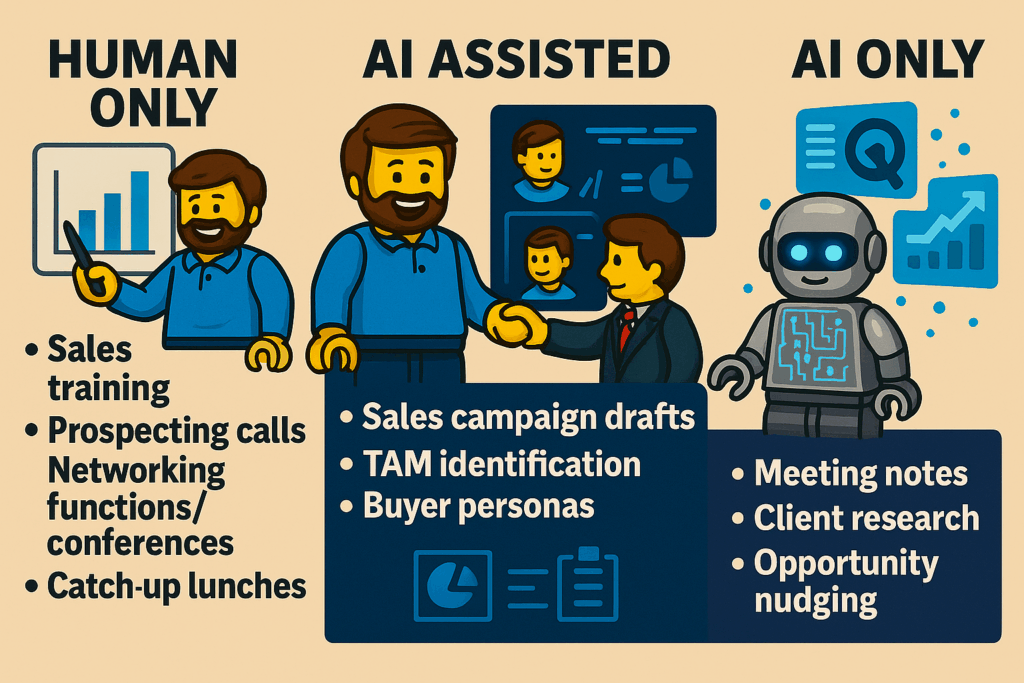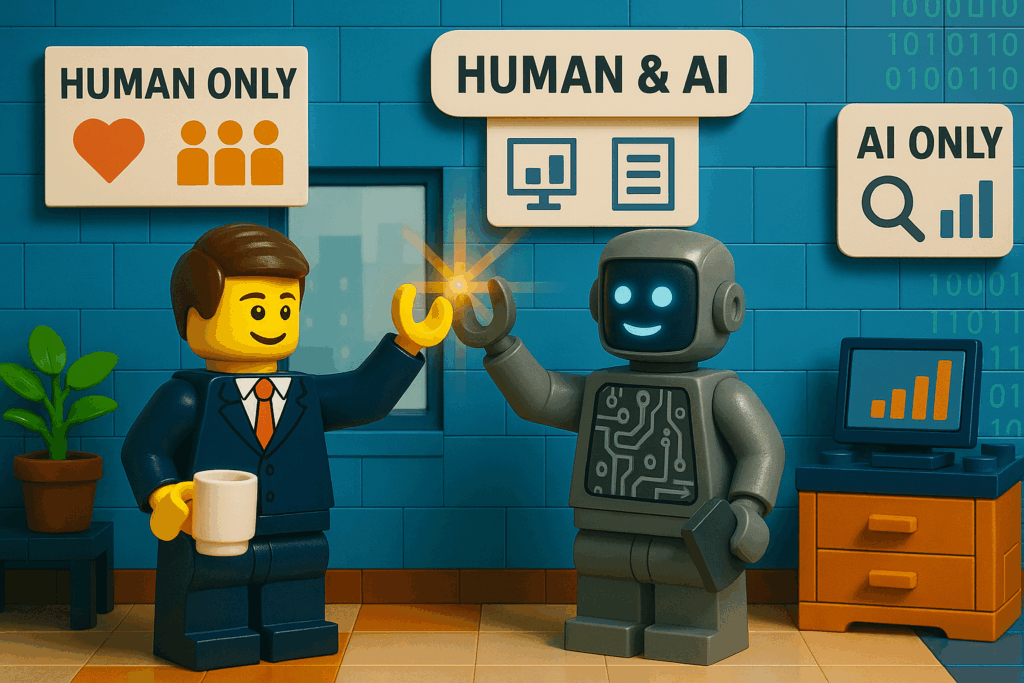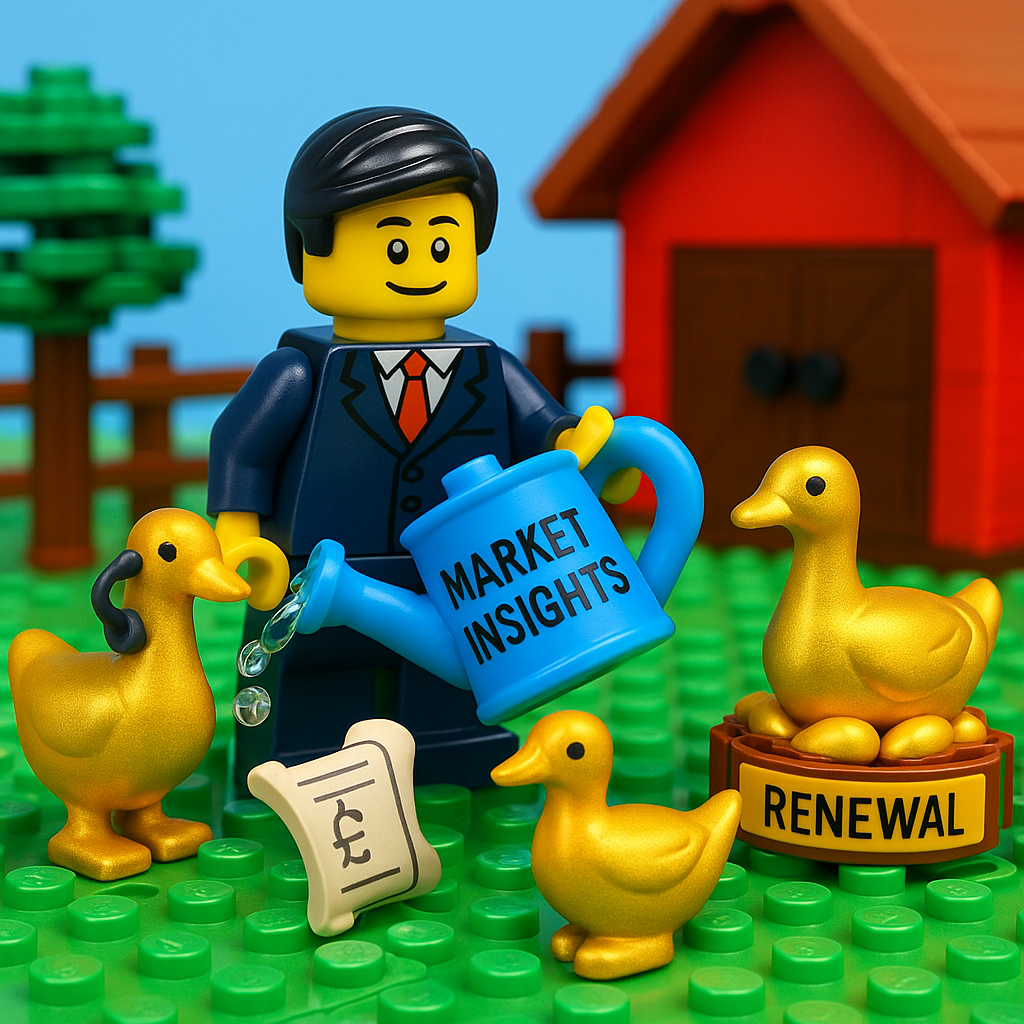Get to Know Your New Colleague
There’s a fundamental shift happening in how we work. Not a software upgrade. Not a new CRM. A full-blown, paradigm upending shift.
Because for the first time, the technology sitting on your desktop or phone isn’t just doing something. It’s thinking with you. Welcome to the era of AI. And if you want to get the most from it, you need to start building a relationship.
Yes, a relationship.
Not in a weird, “I named my laptop” kind of way. But in the same way you would with a new team member: spend time with it, understand how it thinks, know its strengths, train it when it’s wrong, and laugh (quietly) when it confidently makes up facts about your own business.
This week we’re concentrating on how to build an effective relationship with a machine. Enjoy.
#1. You can’t outsource intimacy
AI is clever. Spookily clever, at times. But it’s not human. Which is great, because you are.
So, before you start throwing entire sales campaigns at ChatGPT and hoping for the best, ask yourself this:
What are the things only I can do?
Because that’s where your value lies. Trust-building. Reading the room. Spotting the raised eyebrow in a pitch. Knowing when to shut up (I’m still working on this one). AI can assist with these moments, but it can’t replicate them. These are human skills, and they matter more now than ever.
🔍 Try this:
Pick a meeting from last week. Write down what made it a success (or a flop). How much of that was human judgement, empathy, or presence? That’s your “human only” zone. Guard it fiercely.
#2. Trust it (but only if it earns it)
If you want to use AI at scale, you must trust it. And trust, as David Maister taught us, is built on credibility and reliability.
- Does it consistently produce outputs you’d be happy to sign your name to?
- Does it understand you—your tone, your nuance, your point of view?
Now here’s the twist: Gen AI isn’t deterministic. It’s inherently creative. Ask it to draft the same email five times, you’ll get five variations. Some will make you cheer. Some might make you choke on your tea.
Learning to trust AI means being open to that creativity but setting clear boundaries. Think of it like onboarding a junior writer. You’re training it to operate within your tone of voice. Once you’ve got those rails in place, the output becomes more consistent, more usable, more you.
🧠 Pro tip: Start collecting your “AI greatest hits”. Save the outputs that sound like you, and use those to train your future prompts. You’re building a digital personality, one prompt at a time.
#3. Decide where to spend your precious human time
Here’s your homework. Split your tasks into three buckets:
Split your tasks into three buckets:
- Human Only – trust-building, gut feel, social nuance, tone
- AI Assisted – research, rewriting, first drafts, idea generation
- AI Only – formatting, transcribing, summarising, tidying up data

If you don’t know where your time is going, you can’t scale yourself. And AI doesn’t replace you—it frees you up to focus on the good bits.
We’re building a team of voice enabled AI assistants to support you with BD activities and allow you to spend more time being human. Interested? We’d love to chat.






